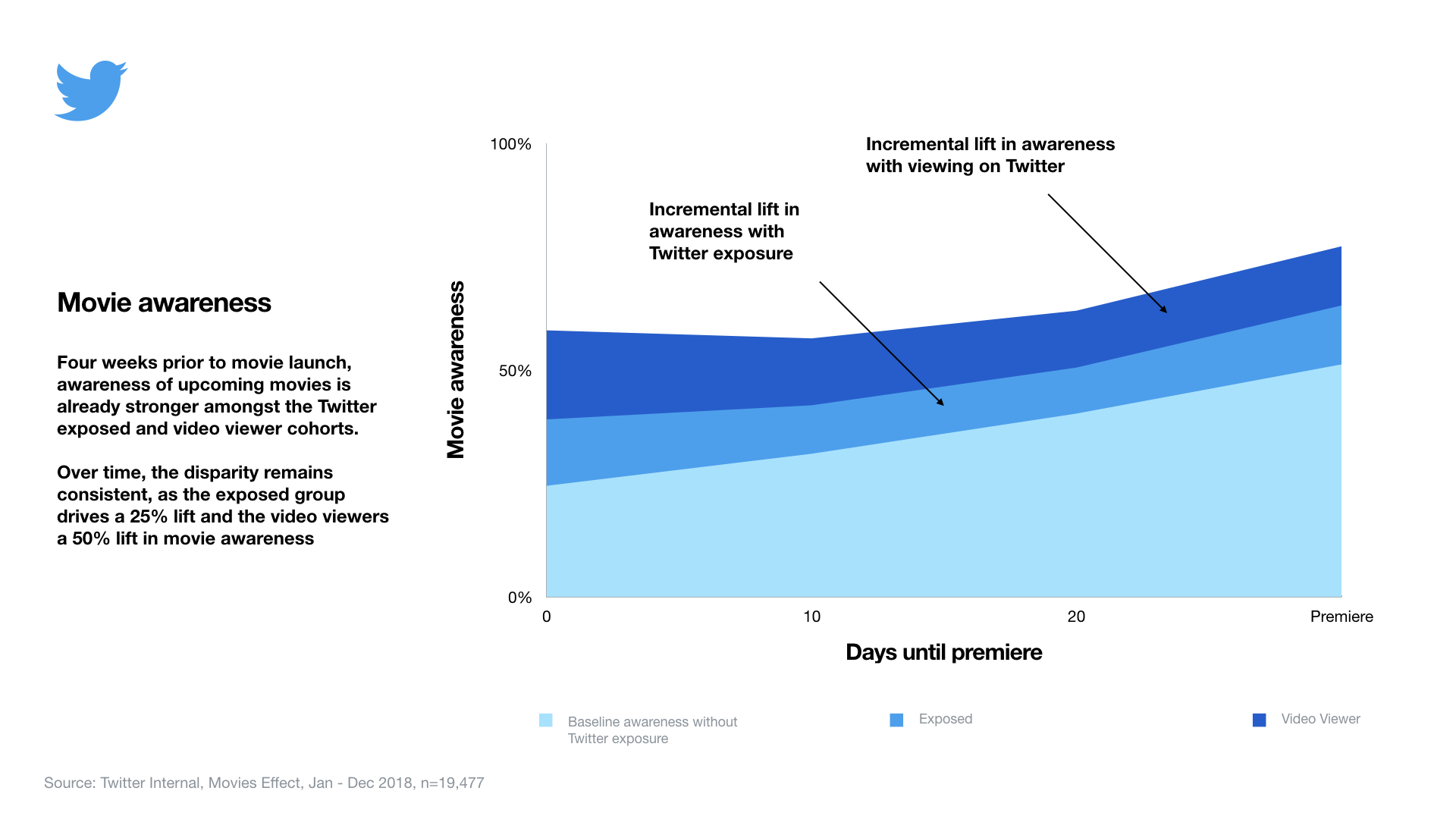Insights
Promoting movies on Twitter boosts key metrics

While the organic conversation around movies is healthy, new data shows promoting movies on Twitter provides significant additional benefits for studio marketers.
Movie lovers flock to Twitter to geek out over the latest trailers, see what their favorite stars are up to, and interact with fellow fans in an everlasting, always passionate conversation. In fact, movie fandom is such a major part of our platform that people on Twitter are 31% more likely to go see a film in a theater on opening weekend.1 And, over the course of a year, they spend 32% more on movies at the theater, too.2
With so much organic Twitter conversation already taking place around movies, studio marketers may be wondering if paid advertising on Twitter is even necessary. After all, why pay to promote your movie trailer when Twitter’s audience might get it trending on their own?
It’s a reasonable question, and we decided to answer it using data. While the organic power of Twitter’s audience speaks for itself, we set out to understand if using Promoted Video to boost the presence of movie trailers provided an additional benefit over organic buzz.
In this study, we identified eight major studio releases from 2018 that were supported by Promoted Video for at least four weeks before their premiere. For each film, we surveyed three groups of Twitter users: those who didn’t see the Promoted Video (unexposed), those who saw the Promoted Video on their feed but didn’t view it (exposed), and those who viewed the Promoted Video (video viewers). In order to measure the added value of Promoted Video, the survey asked if people were aware of the film and if they intended to see it in the theater.
Results
We found that Promoted Video has a positive effect almost immediately: Even four weeks out from the premiere date, the exposed and video viewer groups were already showing incremental lifts in awareness and intent.
As time went on, Promoted Video continued performing for studio marketers. Even as the organic conversation and off-Twitter buzz ramped up, the addition of Promoted Video provided an incremental impact. By the time the premiere date arrived, Promoted Video had driven a 25% lift in awareness for the exposed group and a 50% lift in awareness for the video viewers.


Both the exposed group and the video viewers showed an increased intent to watch, with the video viewers showing an almost doubled intent compared to the unexposed group. The increase was apparent even four weeks out from the premiere date and continued to hold as premiere day approached.
We also found that, for both intent and awareness, people exposed to at least three seconds of video in their feeds had the strongest favorable attitudes compared to similar people in the unexposed group. With most people scrolling rapidly through their feeds, three seconds appears to be the minimum window for making an impression and enticing movie fans into theaters.
Key takeaways
Don’t just rely on organic Twitter buzz: Even when Twitter’s on fire about your movies, never underestimate the incremental impact of Promoted Video views. Ad viewing not only drives massive lifts in awareness and intent to watch, but also contributes to earned impressions via Retweets and general conversation.
Start advertising early: We saw significant lifts in awareness and intent four weeks before premiere day, as soon as ads were served.
Optimize assets for the feed to drive lifts: Video views of just three seconds demonstrate the same lifts in awareness and intent to watch as do longer view times.
Aaron Czinn (@CzinnForTheWin) and Maeve Ricaurte (@maeveric) also contributed to this article.
Methodology
Twitter identified eight high-spending movies that began advertising on Twitter at least four weeks prior to the premiere, and conducted a control/exposed survey to understand how advertising impacts movie awareness, intent to watch in theaters, and ad recall among 19,477 total respondents. We then aggregated and analyzed data trended over the four-week timeframe until the premiere to understand how metrics shift over time. Modeling was done using local polynomial regression, a nonparametric technique that smoothes multiple regressions.
Footnotes:
1 Twitter-commissioned study: Nielsen Video 360 2018, Base (Saw a movie in the past year): Twitter Users, n=543. Compared to the average user of the following social platforms: Facebook, Instagram, Snapchat, and YouTube.
2 Twitter-commissioned study: Nielsen Video 360 2018, Base: Gen Pop, n=2000; Twitter Users, n=621; Average Social Network User, n=1775. Compared to the average user of the following social platforms: Facebook, Instagram, Snapchat, and YouTube.